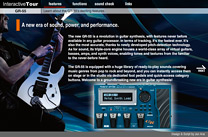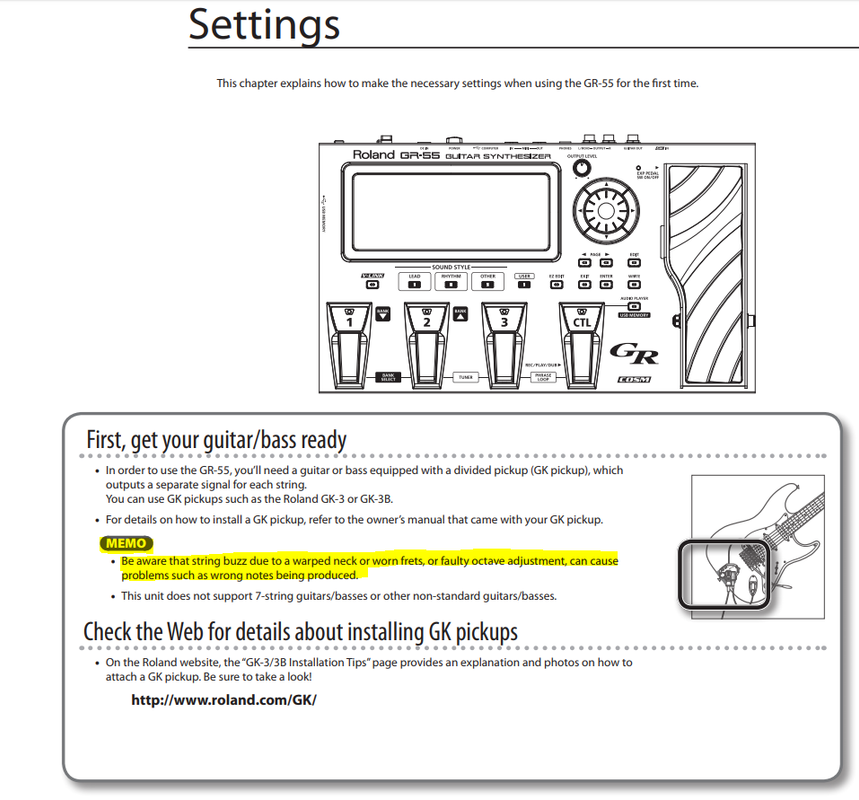Download a PDF version of the Roland Synthesizer Chronicle, 1973 through 2010. The Juno-D offered 640 of new patches. The GR-55 is a key component of my music. Kategorien Premiumabo E-Paper & Web Web only Aboservice Informationen. The Roland SC-55 (Sound Canvas) is a GS MIDI sound module released in 1991 by Roland. The SC-55 was the first sound module to incorporate the new General MIDI standard. It was the first in the Roland Sound Canvas series. The SC-55 used both PCM and a cut-down version of the LA synthesis engine.
The Roland E-20 is a keyboard instrument introduced by Roland in 1988.
Described by Roland as an 'Intelligent Synthesizer,' the instrument was the first product of Roland Europe SpA, which had been set up after a takeover of the SIEL company of Italy the previous year. The new venture was a strategic move by Roland to enter the lucrative high-end home keyboard market which had hitherto been dominated by Yamaha and Technics.
Featuring auto accompaniment, and built in speakers the E-20 used the advanced Linear Arithmetic or 'LA' synthesis system as used on the Roland MT-32 sound module. The E-20 set a new standard for the amateur keyboardist, with high-quality sounds, innovative drum patterns and backings which were widely recognised as being significantly more advanced than both Yamaha's PSR and Technics's KN instruments.
As well as the E-20 itself, the cheaper E-5 and E-10 were subsequently launched as 'cut down' versions, while the enhanced E-30 debuted in 1990. There was also a modular version (the RA-50 Realtime Arranger), and the Pro-E Intelligent Arranger, which was basically half of an E-20, excluding the built-in speakers but including the so-called 'intelligent arranger' and drum unit.
In 1989 the German company Quasimidi produced a popular retrofit upgrade kit that significantly expanded the capabilities of the E-20 stock keyboard. It doubled the number of sounds available from 64 to 128 by unlocking hidden patches previously only available via MIDI. It also doubled the number of user programs that could be stored and enabled the layering of two sounds in the right hand section. Another feature was the removal of the system exclusive control on the automatic accompaniment, allowing this to be controlled by other non-Roland keyboards.
Roland would go on to dominate the home keyboard market in the 1990s with subsequent generations of the E-series line, introducing other firsts – for example the second generation models (the E-15, E-35 and E-70) were among the first Roland keyboard instruments to feature the Roland GS-standard, having been launched at the same time as the legendary Roland SC-55 Sound Canvas module.
Roland would later introduce the closely related professional G-series line (the G-800, G-1000 and later, the G-70) as what were to become known as 'arranger' keyboards began to gain acceptance and recognition within the professional user community. However, all of these products retain the same basic architecture of the E-20.
The current top-of-the-line E-Series keyboard is the E-A7.
Generations of Roland Home Keyboards (Roland arranger keyboards timeline)[edit]
- First Generation (Produced 1988-1991)
- E-5, E-10, E-20, E-30
- RA-50, Pro-E Arranger
- Second Generation (Produced 1991-1993)
- E-15, E-35, E-40 OR, E-70
- RA-90
- Third Generation (Produced 1993-1996)
- E-16, E-16 TR, E-36, E-56, E-66, E-86
- RA-95
- Fourth Generation (Produced 1995/6 – 1998)
- E-12, E-14, E-14 OR, E-14 TR-OR, E-14 US, E-28, E-280B, E-38, E-68, E-68US, E-96, G-600, G-800
- RA-30, RA-800
- Fifth Generation (Produced 1998 – 2001)
- EM-1B, EM-10, EM-20, EM-30, EM-50, EM-50 OR, EM-7B, EM-2000, G-1000
- E-300, E-480B, E-500, E-500 OR, E-600
- Sixth Generation (Produced 2000 – 2005)

- Alpha-JR, EM-15, EM-15 OR, EM-25, Alpha-7, EM-55, EM-55 OR, Alpha-1
- VA-3, VA-5, VA-7, VA-76
- E-100, E-200, EXR-3, EXR-5, EXR-GR5, EXR-7, EXR-40 OR
- EXR-3s, EXR-5s, EXR-7s
- Seventh Generation (Produced 2005 – 2009)
- G-70, E-50, E-60, E-80
- EXR-46 OR, EXR-E2
- GW-7, E-09, E-09W, E-09IE
- Eighth Generation (Produced 2010 – 2011)
- GW-8, Prelude
- Ninth Generation (Produced 2012 – 2016)
- BK-3, BK-5, BK-5OR, BK-7M, BK-9,
- E-A7
External links[edit]
References[edit]
| Developer | Roland Corporation |
|---|---|
| Type | General MIDI |
| Release date | 1991 |
| Platform | IBM PC, PC-88, PC-98, Sharp X68000 |
| Predecessor | Roland MT-32 |
| Successor | Roland SC-88 |
| Related articles | Roland SC-8850 |
Roland Gr 55 Ebay
The Roland SC-55 (Sound Canvas) is a GSMIDIsound module released in 1991 by Roland. The SC-55 was the first sound module to incorporate the new General MIDI standard. It was the first in the Roland Sound Canvas series.
The SC-55 used both PCM and a cut-down version of the LA synthesis engine, to support 24-voice polyphony with 16-part multitimbrality. It came preloaded with the Roland MT-32's variation bank, but lacked the MT-32's re-programmability. Aimed at PC music enthusiasts, the SC-55 featured 317 instrument patches, including the GS drum kits and additional controllers. The selection of effects includes reverb and chorus.

Alongside the SC-55, Roland released the SB-55 (Sound Brush), an inexpensive MIDI sequencer module the same size as the Sound Canvas. Both the Sound Canvas and Sound Brush could be rackmounted alongside each other.
Other models with comparable tone generators include Roland CM-300, Roland CM-500 and Roland SC-155 sound modules. CM-300 and CM-500 models lack the LCD screen and extended controls of SC-55. Both models have external appearance nearly identical to Roland's earlier CM-32/64-series modules. SC-155 adds additional slider controls for master and channel level and panning. Additionally, CM-500 includes fully SysEx compatible LA tone generator similar to CM-32Ls.
The SC-55mkII[edit]
A minor upgrade to the original SC-55, the Roland SC-55mkII has increased polyphony (28 voices), more patches, raising the total number to 354 instruments and extended, and improved audio-circuitry in the form of 18-bit audio (versus 16-bit in the original SC 55.)

The SC-55mkII added a serial port as an alternative interface to the MPU-401.
Roland SCC-1[edit]
Roland also released the Roland SCC-1, an 8-bit ISA half-size card incarnation of the SC-55 sound module. The sound source is controlled by an on-board MIDI Processing Unit, a variant of the MPU-401 unit. An updated version featuring the SC-55mkII sound set was also released, known as SCC-1A. When bundled with the Band-in-a-Box and BalladeGS software, it's called SCC-1B.
Roland later replaced the SCC-1 with a combination of their MPU-401AT MIDI interface card and SCB-55 Wave Blaster-compatible daughterboard. Roland referred to this combination as the SCM-15AT. The SCC-1 was also sold as the GPPC-N for the NEC PC-98.
CM-32P and MT-32 Emulation[edit]
Since the SC-55 has no programmable memory, CM-32P and MT-32 emulation is done by providing the same sound arrangement as the preset sounds of actual devices. These variation banks are enabled by playing back special SysEx containing MIDI files, for example GS32.MID (included in the SCC-1 Utility Software), prior to loading a software title. These specially arranged tone tables contain the relevant GS sound mapped at either CM-32P or MT-32 program number. Pitch bend range is changed to 12 semitone from GS default 2 semitones. Master tuning and modulation depth are not altered by the emulation. Pan directions are reversed from actual CM-32P or MT-32 devices. CM-32P or MT-32 specific MIDISysEx messages are also ignored by the SC-55.
MT-32 Emulation Samples[edit]
Roland Gr 55 Patches Download
The Roland SC-55's CM-32P and MT-32 emulation is based on using preset sounds of the actual devices without utilizing programmable memory or actual device synthesis techniques. This results in poor emulation for software titles relying on custom programmable MT-32 sounds as demonstrated by the introduction of the Sierra On-Line game Space Quest III: The Pirates of Pestulon.
Roland Gr 55 Guitar Center
Software titles supporting the Roland MT-32 but not utilizing its memory are emulated with better results as demonstrated by the introduction song from Origin Systems' Ultima VI: The False Prophet.
Use in media[edit]
The sounds of the SC-55 (or any other similar Roland products) can be recognized in various television jingles and production music during the 1990s. It is also notable for its use in various episodes of British television series Mr. Bean.
Notable Users[edit]
Roland Gr-55 Vs Gr-33
- Liz Kitchen (Tweenies, Playdays, Tikkabilla, The Shiny Show)
- Francis Haines (The Story Makers, Mr Men, Timbuctoo, The Shiny Show, Tikkabilla, Busy Buses)
- Robert Hartley (Brum, Teletubbies, Rosie and Jim)
- Kim Goody & Alan Coates (Fifi and the Flowertots, Tiny Planets, Mike & Angelo, Roary the Racing Car)
- Dave Cooke (ChuckleVision)
- KICK Productions (Sitting Ducks, Fimbles, Rubbadubbers, The Beano All-Stars)
- Bob Singleton (Barney & Friends)
- Julian Ronnie (Sooty, Bug Alert!, Jellikins)
See also[edit]
Further reading[edit]
- 'Roland Sound Canvas SC-55 MK2'. The Amiga Buyer's Guide '94. No. 1. Winter 1994. p. 172.